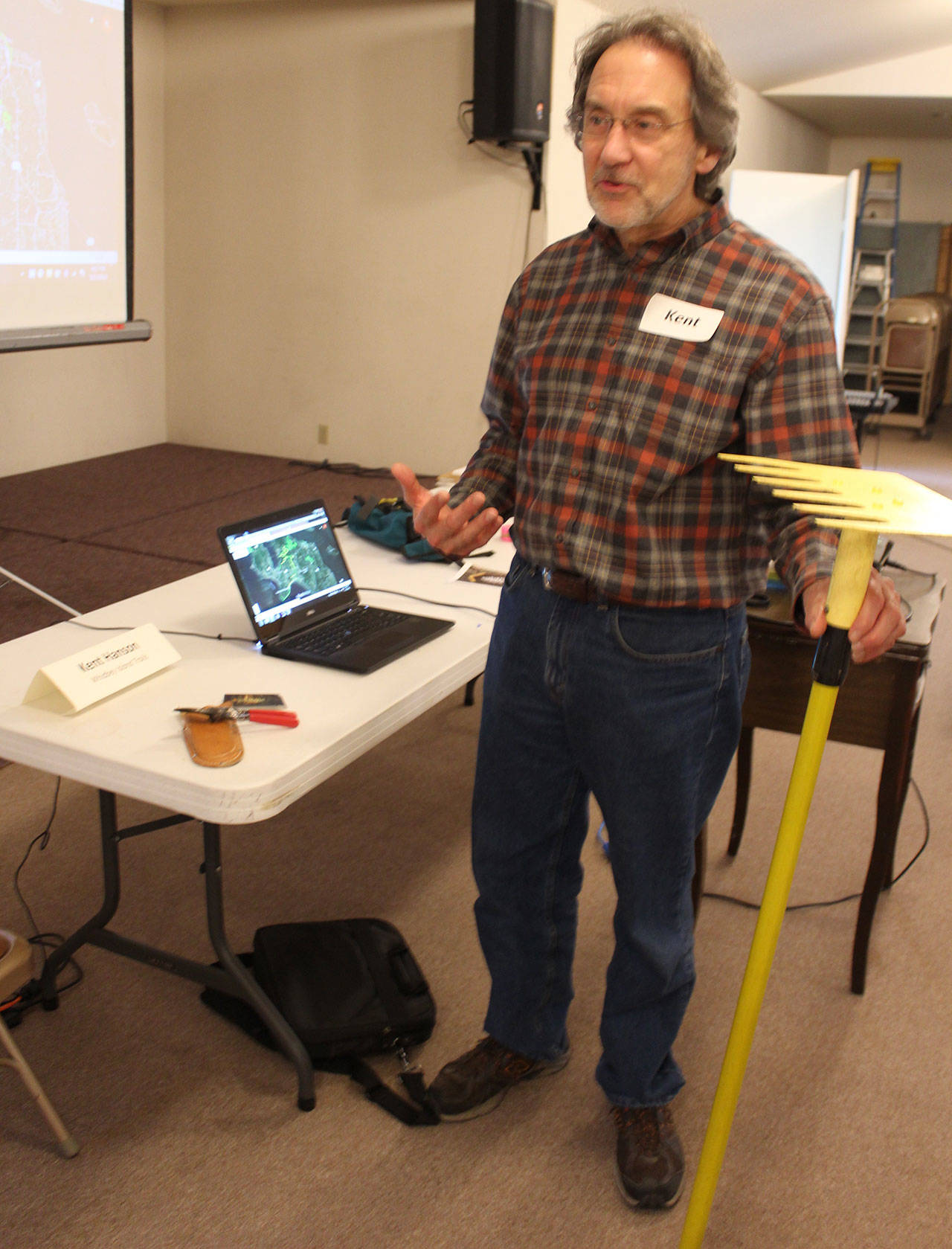Langley property owners don’t have to fear losing their private land for the public good of establishing walking trails.
That message kicked off Thursday evening’s meeting about how best to establish a trail system in and around the Village by the Sea.
“No one is going to make a trail across your land without your permission,” Gail Fleming reassured the three dozen people in attendance. “There’s no eminent domain (planned).”
Fleming, who heads the city council’s Parks and Open Space subcommittee, added that such concerns needn’t be aired. Any people still worried, she said, should “feel heard already.”
The panel of city, county and parks officials and other representatives said they wanted to find out where people regularly walked and where they’d like to walk.
“Our goal is to connect those two,” Fleming said.
One woman in attendance admitted she often knowingly passes through private streets and lots when walking in and around Langley but figures “it’s okay if no one yells at me.”
Large black maps showing trails in color-coded coordinates were placed around the room so residents could add pushpins where they currently hike. All possibilities for establishing hiking trails and connecting them will be considered, the panel said.
Combining government land — state, city, county —with private land for a trail system could happen using a variety of methods including raising funds to purchase the land, establishing easements or asking residents to allow walkers to pass through their property.
Landowners can agree to easements on their property allowing for certain sections to be used by the public.
Whidbey Camano Land Trust has successfully employed that strategy dozens of times. By negotiating with landowners, it’s been able to designate swaths of private land for public use while preserving wilderness.
“Conservation easements remove development rights but it remains in private hands,” explained Jessica Larson with the Land Trust. But linking designated easements can take years as the group found out when it took on the task of connecting public paths in Ebey’s Reserve.
“Trails take time to build well and design,” Larson said in an interview. “It takes time to coordinate. The Walking Ebey’s Trail is on 22 different properties and ends up going eight miles.”
For property owners who agree to allow their land to be part of a new trail system, liability won’t be a concern, explained Kent Hanson, a resident who said he has “an idea, not an organization” called Whidbey Island Trails.
“The biggest impediment most people worry about is liability,” he said. But a law exists that allows private landowners to let the public use their property as long as they don’t charge any fee, Hanson explained.
Additionally, local governments seeking to allow public use on private land will indemnify — or hold the landowner harmless — should there be a problem, he added.
Doug Coutts, director of South Whidbey Parks and Recreation, said a recent lawsuit in Tacoma involving private land and public use shows such immunity doesn’t protect people from being sued but most likely the case will be thrown out.
Hanson said he and other volunteers have been going around talking to residents about their willingness to have trails cross their properties.
“My theory is you shouldn’t have to get into your car to go for a walk,” he said. “And we shouldn’t have to guess whether it’s okay to walk on someone’s property.”



